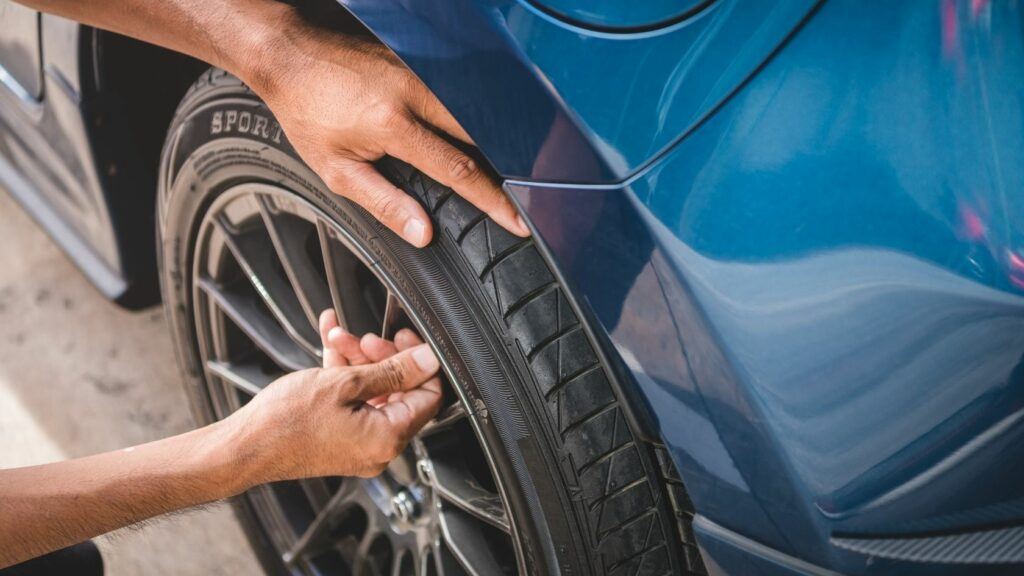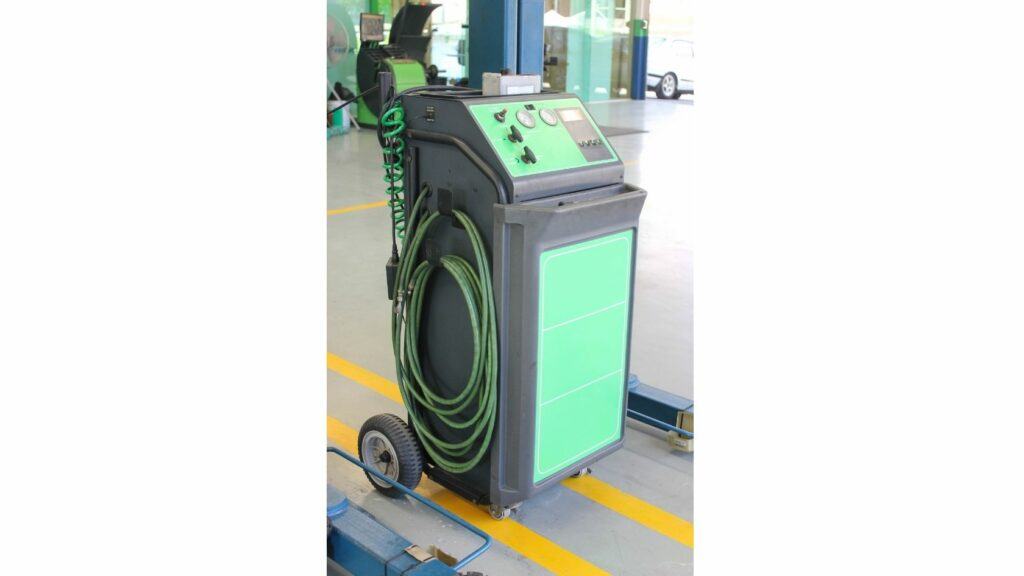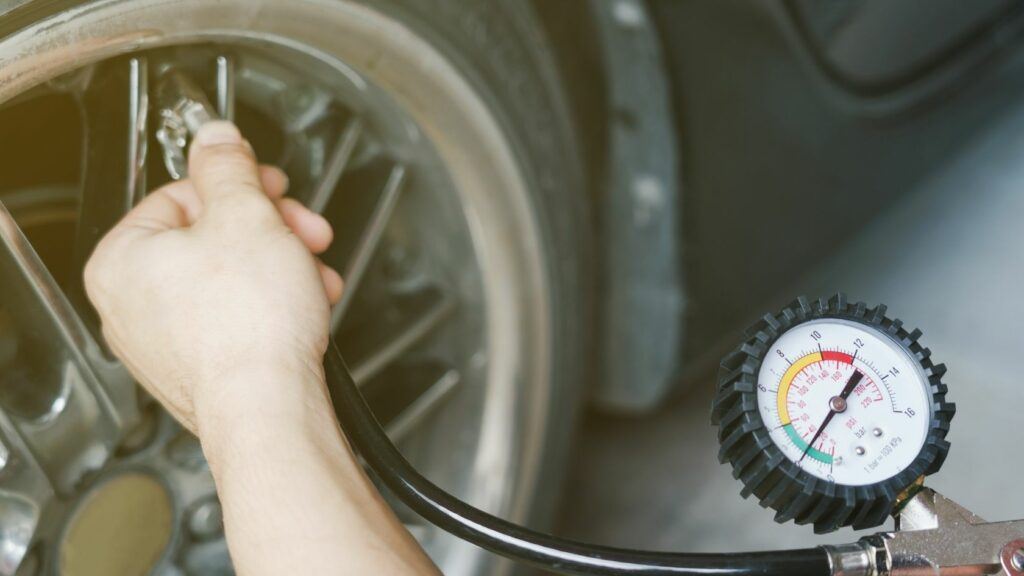
Can you mix air in nitrogen-filled tires? This is an ongoing debate regarding maintaining your vehicle’s tires.
The reasons for this debate could be many but one of them is the unavailability of nitrogen inflating resources. So, what will you do? Will you go ahead and inflate your nitrogen tires with regular air?
If yes, what will be the effects of such an awkward mixture? In this blog post, we will dive into the details and debunk the myths surrounding mixing air with nitrogen, their advantages and disadvantages, and many more.
Can You Mix Air in Nitrogen-filled Tires?
Yes, you can mix air in nitrogen-filled tires and vice versa. There is no harm in doing so, and it will not damage your tires.
However, you have to keep certain conditions and risks in mind associated with air and nitrogen mixture.
Nitrogen is an inert gas that has been used in various industries, including automotive, due to its stable properties. In tires, it is known for its ability to maintain stable tire pressure for a longer duration.
On the other hand, regular air, consisting of oxygen and other gases, is the standard inflation choice for tires. While it contains about 78% nitrogen, it also has oxygen and other elements which can cause fluctuations in tire pressure.
So, mixing air and nitrogen will dilute the purity of the nitrogen, which will reduce some of the benefits of using nitrogen in the first place.
Enhanced fuel efficiency, improved tire durability, and better air retention are some of the benefits and factors that favor nitrogen.
If you are considering using nitrogen in your tires, it is important to weigh these benefits against air and then decide which is better in the long run.
Pros and Cons of Nitrogen-Filled Tires
Nitrogen-filled tires have gained popularity in recent years, with proponents touting their benefits over regular air-filled tires.
While there are some advantages to using nitrogen, it’s important to weigh these against the potential drawbacks before making a decision.
Pros of Nitrogen-Filled Tires:
Reduced Pressure Loss: Nitrogen molecules are larger than oxygen molecules, making them less prone to escaping through the tire’s rubber. This results in slower pressure loss and more consistent tire pressure over time.
However, despite nitrogen’s stable pressure due to larger molecules, the advantage of pressure loss isn’t significantly substantial. Nitrogen-filled tires show only a slight 1.3 psi difference in pressure loss over time compared to air-filled tires.
Improved Fuel Efficiency: Consistent tire pressure contributes to better fuel economy. Properly inflated tires reduce rolling resistance, allowing your vehicle to travel further on the same amount of fuel.
But, to enjoy the advantage of better fuel efficiency you have to ensure checking your vehicle tires regularly.
Considering the pressure stability and minor improvement in pressure loss of nitrogen-filled tires, you may not be able to detect the drop in tire pressure on time. This means continuing driving with under-inflated tires which can reduce the overall fuel efficiency.
Minimized Tire Wear: Consistent tire pressure also helps prolong tire life. Underinflated tires experience uneven wear, leading to premature replacement. Nitrogen helps maintain optimal pressure, reducing wear and extending tire lifespan.
Since nitrogen is an inert gas, it doesn’t react with other substances, which also minimizes corrosion of tire rims and valve stems, extending their service life.
Cons of Nitrogen-Filled Tires:
Higher Cost: Nitrogen inflation typically costs more than air inflation, as it requires specialized equipment and trained personnel.
Nitrogen filling is expensive ranging from $5 to $7 or more making it less economical compared to using free or inexpensive air.
Limited Availability: Nitrogen inflation stations are not as widespread as regular air pumps, making it less convenient to top up your tire pressure.

Finding tire shops offering nitrogen can be inconvenient, limiting accessibility for regular top-offs. In contrast, adding air is widely available and significantly more affordable.
Minimal Benefits for Regular Drivers: The advantages of nitrogen are most noticeable in high-performance vehicles or those operating in extreme conditions. For regular drivers, the benefits may not be significant enough to justify the added cost.
Here are some things to keep in mind if you are mixing air and nitrogen in your tires:
- The more air you add to nitrogen-filled tires, the less benefit you will get from the nitrogen.
- If you are using nitrogen in your tires, it is a good idea to check the pressure more often than you would with air-filled tires. This is because nitrogen leaks out of tires more slowly, so it is easy to miss a slow leak.
Ultimately, the decision of whether or not to use nitrogen in your tires is up to you. If you are looking for the best possible performance and fuel economy, then nitrogen is a good option. However, if you are on a budget, then air is a perfectly acceptable alternative.
How Long Does Nitrogen Last in Tires?
Nitrogen-filled tires can maintain stable pressure for a few months, but it’s essential to regularly check the pressure to ensure it remains within the recommended range.
Nitrogen, being a larger molecule than oxygen, escapes from tires at a slower rate than regular air. This means that nitrogen-filled tires maintain their pressure more consistently over time. However, nitrogen does not remain in tires indefinitely.
On average, tires filled with air lose about 1.5 psi every month, whereas tires filled with nitrogen will lose that amount in about 3-4 months. This means that nitrogen-filled tires typically require less frequent top-ups compared to air-filled tires.
Despite the slower leak rate, it’s still recommended to check the tire pressure of nitrogen-filled tires regularly, ideally every month or as suggested by the tire manufacturer. This ensures that the tires maintain optimal pressure for safety, fuel efficiency, and tire longevity.
How to Check Nitrogen Tire Pressure?
Checking the tire pressure of nitrogen-filled tires is essentially the same process as checking air-filled tires. You’ll need a tire pressure gauge, which is readily available at automotive stores or gas stations.

Here’s a step-by-step guide:
- Find the recommended tire pressure for your vehicle. This information is usually found on a sticker inside the driver’s door or in the vehicle owner’s manual.
- Check the tire pressure when the tires are cold, ideally before driving or after the car has been parked for a few hours. Cold tires provide a more accurate pressure reading.
- Remove the valve stem caps from each tire. These caps protect the valve stems from dirt and debris.
- Press the tire pressure gauge firmly onto the valve stem. The gauge will display the current tire pressure.
- Write down the pressure reading for each tire. Compare these readings to the recommended tire pressure.
- If any tire is underinflated or overinflated, adjust the pressure using an air compressor or a nitrogen inflation station.
- Once the tire pressure is adjusted, securely replace the valve stem caps on each tire.
- Check the tire pressure regularly, ideally once a month or as recommended by the tire manufacturer.
Are Nitrogen-filled Tires Environmentally Friendly?
Both nitrogen and air have environmental impacts, including production methods and emissions.
While nitrogen itself is not directly beneficial to the environment, its ability to maintain tire pressure indirectly contributes to environmental benefits. By reducing fuel consumption and tire wear, nitrogen-filled tires can play a small role in reducing greenhouse gas emissions and resource consumption.
However, it’s important to note that the environmental benefits of nitrogen-filled tires are relatively minor compared to other eco-friendly practices, such as driving less, using fuel-efficient vehicles, and maintaining proper vehicle maintenance.
Additionally, the production of nitrogen gas for tire inflation does have an environmental footprint, as it requires energy to separate nitrogen from the air. This energy consumption should be considered when evaluating the overall environmental impact of nitrogen-filled tires.
Final thoughts
It doesn’t matter if you mix air in nitrogen-filled tires or vice versa. The key is to ensure your tires are properly inflated, regardless of the type of gas used.
Nitrogen-filled tires offer some advantages, particularly for performance-oriented drivers or those who prioritize consistent tire pressure and reduced corrosion.
However, for regular drivers, the benefits may not outweigh the higher cost and limited availability of nitrogen inflation.
Regular air, when properly maintained, can provide adequate performance for most everyday driving situations.
Many experts in the automotive industry agree that while nitrogen has its advantages, using regular air in tires is perfectly safe and practical for most drivers. The choice between nitrogen and regular air depends on your specific needs and availability.
Remember, maintaining the correct tire pressure is crucial for your safety and the longevity of your tires. Whether you opt for nitrogen or regular air, regular checks and proper inflation are the keys to a smooth and safe ride.

